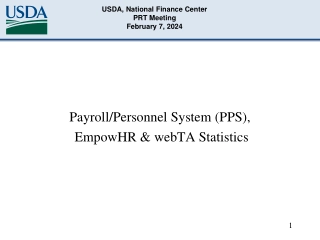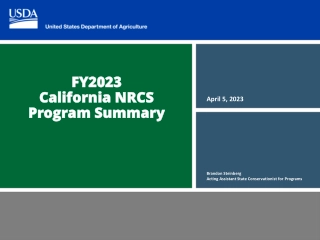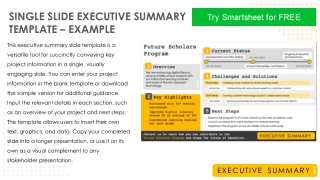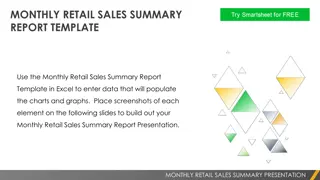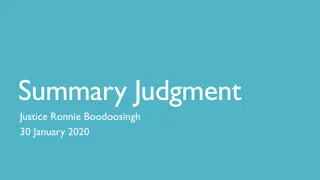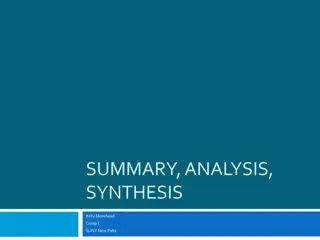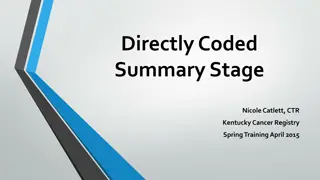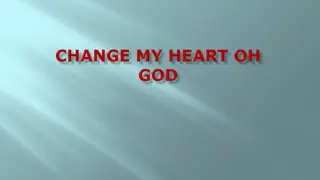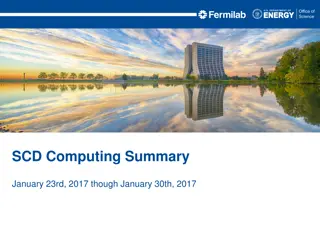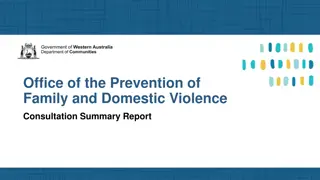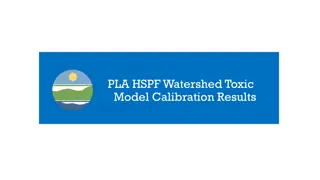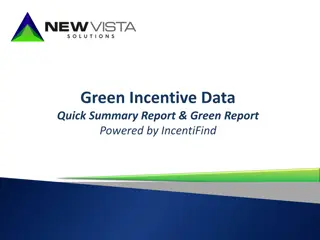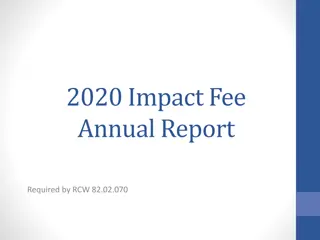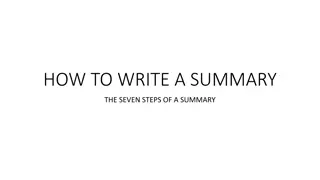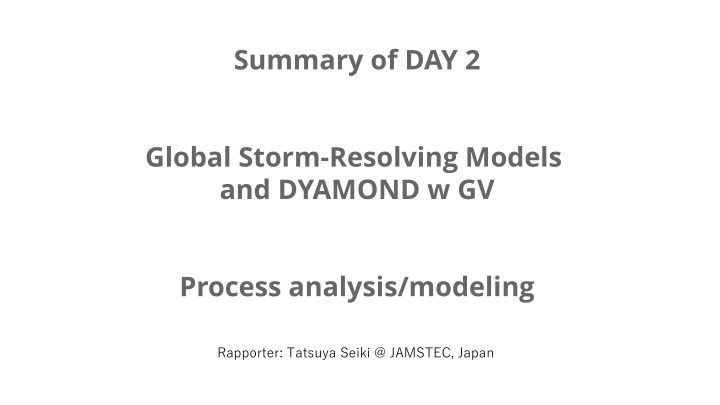
Global Storm-Resolving Models and DYAMOND with GV Process Analysis
Explore the latest advancements in storm-resolving models and process analysis with a focus on vertical motion, aerosols, convective strength, cloud microphysics, and more. Key topics include thermal plumes, convective organization, and impactful weather phenomena such as tropical cyclones and polar clouds. Discover complementary projects and tools supporting these studies and address critical issues in cloud microphysical processes and data integration.
Download Presentation

Please find below an Image/Link to download the presentation.
The content on the website is provided AS IS for your information and personal use only. It may not be sold, licensed, or shared on other websites without obtaining consent from the author. If you encounter any issues during the download, it is possible that the publisher has removed the file from their server.
You are allowed to download the files provided on this website for personal or commercial use, subject to the condition that they are used lawfully. All files are the property of their respective owners.
The content on the website is provided AS IS for your information and personal use only. It may not be sold, licensed, or shared on other websites without obtaining consent from the author.
E N D
Presentation Transcript
Summary of DAY 2 Global Storm-Resolving Models and DYAMOND w GV Process analysis/modeling Rapporter: Tatsuya Seiki @ JAMSTEC, Japan
Science Targets with ECare instruments CPR : vertical motion of precipitating particles ATLID: aerosol (CCN, IN, absorbing matter, non-spherical ice) MSI : reflectance, emissivity, cloud fraction, horizontal inhomogeneity BBR : convective strength, water vapor in clear sky Sc Cu, POCs(open-close cells), Life-cycle of aerosol-cloud-rain with CPR, ATLID, and geo- stationary satellite (Graham) Low-thin liquid clouds with MSI, CPR, ATLID, and BBR (Jean-Louis) Similarly, high-thin cirrus Convective organization and its effect on the energy budget (radiation/momentum/MSE) with BBR, CPR, other satellites, and reanalysis (Bjorn, Ann, Silke, Hiro) Microphysics: accretion of graupel just above the freezing level and self-collection and evaporation of rain under the melting layer with CPR (Woosub) Thermal plumes in convective clouds with aerosol effects with CPR and ATLID (Toshi) Possible other targets Tropical cyclones (issue of full attenuation) and extra-tropical cyclones Polar clouds and Arctic sea-ice
Complementary and supporting projects/tools Global Storm Resolving Models in the DYAMOND project [summer(agcm)/winter(aogcm)] Data is available (contact the ESiWACE coordination team). Satellite simulators [COSP (Alejandro), SDSU(Hiro), J-Sim(Tempei, Woosub)] Packages are available. Air-craft measurements over the tropical/extra-tropical Atlantic ocean (Bjorn, Silke) Data availability ? Ground measurements [Germany/Barbados-island/Cape Verde (Silke), Tokyo (Masaki) ] Data availability ? Other new satellites (ACCP?)
ISSUES Determining the behaviors of individual cloud microphysical processes in the multi parameter- space (Graham) New observable parameters produce the additional dimensions to the space Cloud Albedo, COT, AOT, cloud fraction, ext, Ze, Nc, LWC, re, w, t, ice habits How can we use vertical information from Ecare? (use of the vertical gradient?) Dynamical regimes determined by the time-lag composite using multi-satellites (Hiro), geo- stationary satellite (Graham), or percentiles of physical parameters (Ann, Jean-Louis) 2-D param: OLR, column water vapor, relative humidity @ specific level, cloud reflectance, precipitation rate, column integrated moist static energy 3-D param: Relative humidity Synergetic use of satellite, air-craft measurements, ground observations, and models to constraining cloud microphysics (Silke, Woosub, Tempei (DAY1)) Different spatio-temporal resolution among datasets (foot-print sizes of CPR, ATLID, MSI) Spatial inhomogeneity, fine-scale structure (Jean-Louis, Toshi, Tempei(DAY1)) Understanding what is going on in the natural world or in fine-scale cloud systems Model evaluation/development (Ann, Woosub) 1M or 2M, PSD, and assumed D- t relationship (ice habits). What is detectable ? (Woosub, Tempei(DAY1)) Vd is clear (Ze is likely to suffer from attenuation) Vd is available for model evaluation
TODO Sharing tools and settings Satellite simulators (but, it is hard to get used to them all) Sharing dataset collocated satellite products [e.g., GOCCP, EarthCARE Research A-train Product Monitor by JAXA, and other collocated satellite products] A suit of process-oriented analyses, model evaluation Synchronized dataset for satellite-air craft observations or satellite-ground observations A suit of model inter-comparison Practice using Single-Column-Model/LES with satellite simulators that take realistic noises into account determining the cloud microphysical processes that are detectable check whether signals are real or false (validation of retrieval algorithms) Towards the goals (scientific goal and social contribution) Visibility of the contribution of ECare to climate issues.


